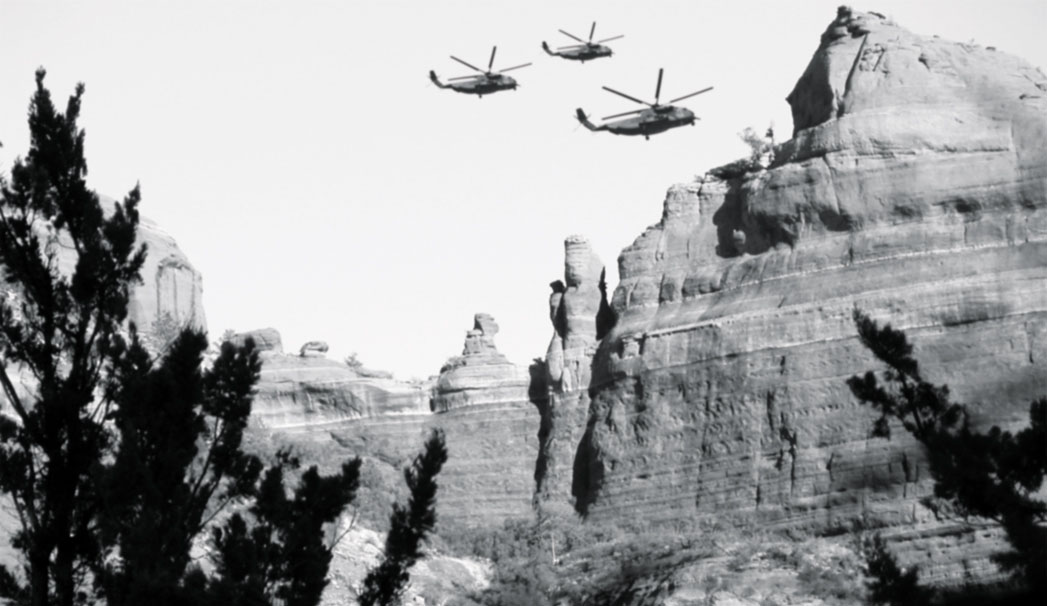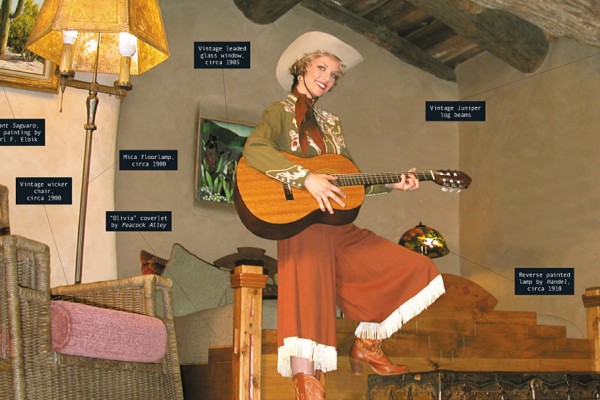We love Sedona! We love the climate! The people! The scenery! And we love it all the more whenever we stumble upon quirky tales from its past. As much as how the rocks were named or what crops the early settlers planted, some of the best stories of Sedona history are offbeat gems that sparkle with facets of our ingenuity, individualism, stick-to-it-iveness, and occasional foibles. Here are 10 bits of Sedona lore from off the beaten path. They may amaze you, make you laugh or even boil your blood. But all are pieces to the puzzle that makes Sedona special.
1. Standby Would’ve Been Cheaper
On August 16, 1987, Sedona attracted thousands of believers to The Harmonic Convergence, an international event based on the Mayan calendar. The celebration honored an unusual planetary alignment said to usher in an age of peace and harmony. During the festival, a rumor spread that the top of Bell Rock would open and a spaceship would rise from within to depart for the galaxy of Andromeda. A reported crowd of 2,000 to 5,000 people showed up to witness the event, some even paying up to $150 for tickets to sit on Bell Rock at the moment of takeoff. Peace and harmony, sure, but how about manners? We’ve yet to receive a single postcard from Andromeda…
2. Last of the Big Park Mamas
To the south of Sedona once sat an area known as Big Park, which was owned for many years by Fannie Belle Gulick. In the early 20th century, Mrs. Gulick amassed her fortune through prospecting, mining, and a little help from the Las Vegas “rooming house” she ran for 42 years – historians say that was a polite term for “bordello.” Lore about Mrs. Gulick suggests she had little use for politeness, though. Reportedly, she once said of her Vegas biz, “I’d give ’em a bed and I’d give ’em hell.” Gulick moved to Sedona in the 1940s, scooping up lots of land with her hard-earned dough. After her death in 1963, her 1,000 acres of Big Park came under the control of developer Irving A. Jennings Jr., who announced plans in 1967 for a new community to be built there – we know it as the Village of Oak Creek.
3. Prop Rock
Sedona’s Red Rocks proudly stand guard over our community, drawing people here from every corner of the earth to marvel at nature’s majesty. Just don’t point them to the entrance to West Fork Trail and the switchback past it, because the rocks there are to sandstone what cubic zirconium is to diamonds. The area overlooking the narrow, well-traveled Highway 89A was prone to rockslides. Attaching a protective net to cover dangerous areas would have spoiled its natural beauty, so officials chose instead to brace the facade with artificial materials that would blend in with the real rocks; it’s very much like the substance used for phony stonework in shopping malls. From a distance, or when motoring past at 40 mph, the fakes look convincing, and we’ll take them over a chunk of sandstone coming through the sun roof. Still, for our money, you’d be hard-pressed to find a goofier looking sight up-close.
4. One Ring-A-Ding Dingy
On June 19, 1954, Mountain Bell established the first Sedona telephone exchange. The company served 152 customers, almost all of them with pay phones at public locations. As a result, making a call often meant a long wait in line. Local storeowner L.E. “Dad” Hart seized the new opportunity, and placed a telephone in his store to great success. To help customers pass the time while waiting, “Dad” also added a bar, from which he sold them beer and wine. No records exist of the percentage of wrong numbers dialed from this location.
5. What’s in a Name?
Cathedral Rock was originally named Courthouse Rock around 1878. When the area came under the domain of the U.S. Department of Agriculture, the agency issued new maps that misidentified the site as Cathedral Rock. The new name stuck. Similarly, a decision by another federal bureaucracy gave our town its name. The U.S. Post Office rejected the original request to use the name Schnebly Station because it wouldn’t fit on a rubber stamp; the aspiring local postmaster’s wife’s name, Sedona, was accepted as a more concise alternative.




